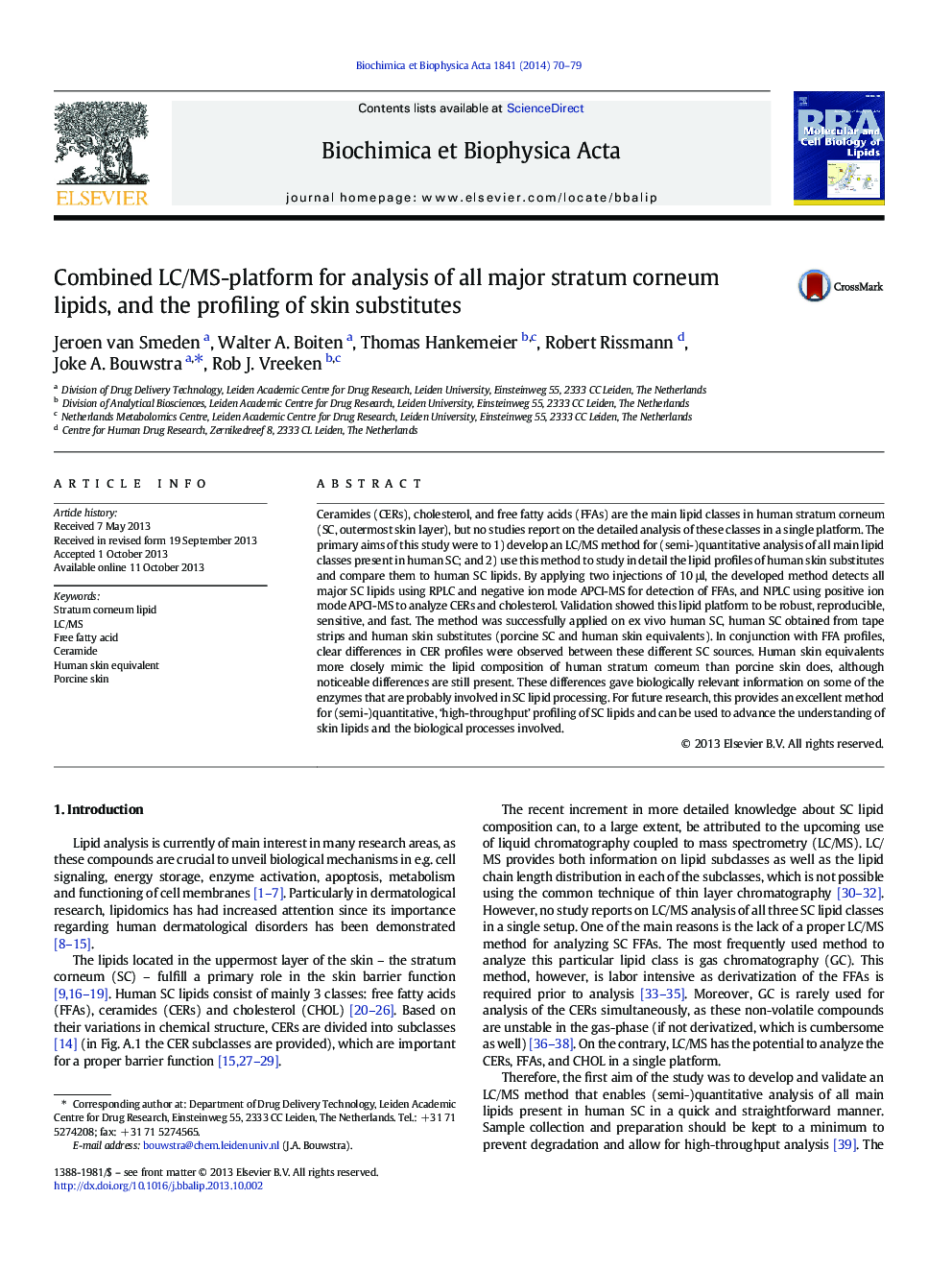| Article ID | Journal | Published Year | Pages | File Type |
|---|---|---|---|---|
| 1949291 | Biochimica et Biophysica Acta (BBA) - Molecular and Cell Biology of Lipids | 2014 | 10 Pages |
•First quantitative LC/MS method for detailed analysis of skin fatty acids•Fast subclass and chain length profiling for all main stratum corneum lipid classes•High method sensitivity enables in vivo tape strip sampling of skin lipids.•Aberrant lipid profile for skin substitutes compared to human skin.•Increased expression of desaturases aligns with the altered lipids in skin substitutes.
Ceramides (CERs), cholesterol, and free fatty acids (FFAs) are the main lipid classes in human stratum corneum (SC, outermost skin layer), but no studies report on the detailed analysis of these classes in a single platform. The primary aims of this study were to 1) develop an LC/MS method for (semi-)quantitative analysis of all main lipid classes present in human SC; and 2) use this method to study in detail the lipid profiles of human skin substitutes and compare them to human SC lipids. By applying two injections of 10 μl, the developed method detects all major SC lipids using RPLC and negative ion mode APCI-MS for detection of FFAs, and NPLC using positive ion mode APCI-MS to analyze CERs and cholesterol. Validation showed this lipid platform to be robust, reproducible, sensitive, and fast. The method was successfully applied on ex vivo human SC, human SC obtained from tape strips and human skin substitutes (porcine SC and human skin equivalents). In conjunction with FFA profiles, clear differences in CER profiles were observed between these different SC sources. Human skin equivalents more closely mimic the lipid composition of human stratum corneum than porcine skin does, although noticeable differences are still present. These differences gave biologically relevant information on some of the enzymes that are probably involved in SC lipid processing. For future research, this provides an excellent method for (semi-)quantitative, ‘high-throughput’ profiling of SC lipids and can be used to advance the understanding of skin lipids and the biological processes involved.
Graphical abstractFigure optionsDownload full-size imageDownload high-quality image (137 K)Download as PowerPoint slide
